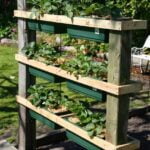Are you looking to add dimension and visual interest to your outdoor space? Look no further than the world of mound landscape ideas.
Mound landscapes offer a unique way to bring beauty and functionality to your garden, while also providing opportunities for creativity and expression. In this article, we will explore the versatility and charm of mound landscapes, offering insight into various styles, designs, plant choices, hardscaping options, DIY projects, maintenance tips, and inspiring designs to help you transform your outdoor space.
Mound landscapes are an excellent way to create dynamic elevation changes within your garden, adding depth and texture to the overall aesthetic. From small mounds creating gentle slopes to larger mounds making a bold statement, there are various styles and designs to consider when incorporating mounds into your landscaping. Whether you’re looking for a modern minimalist look or a lush and natural feel, there’s a mound landscape idea that can suit your preferences and complement your outdoor area.
When it comes to choosing plants for mound landscapes, careful consideration must be given to ensure the right balance of color, texture, and height. By selecting the appropriate flora for your mounds, you can create a lush and visually appealing garden that thrives in its elevated environment.
Additionally, integrating hardscaping elements such as paths, walls, and features can enhance the functionality and accessibility of your mound landscape while adding architectural interest. As we delve into this article, you’ll discover expert tips on plant selection and hardscaping considerations that will help you achieve the perfect mound landscape design for your outdoor space.
Types of Mound Landscapes
Mound landscapes are a unique and eye-catching addition to any outdoor space, adding dimension and visual interest to the garden. When considering different types of mound landscapes, it’s essential to explore various styles and designs to find one that fits your aesthetic preferences and functional needs. From traditional to modern, there are numerous options to choose from when it comes to creating a beautiful mound landscape for your home.
One popular type of mound landscape is the Japanese Zen garden, known for its minimalistic and serene design. These gardens often feature carefully sculpted mounds of gravel or sand, along with strategically placed rocks and plants. The result is a tranquil and contemplative space that can serve as a peaceful retreat within your property.
Another style of mound landscape is the English cottage garden, which is characterized by its informal and lush appearance. In this type of garden, mounds are often created with a mix of perennials, annuals, and flowering shrubs, giving it a charming and romantic ambiance. These gardens often include winding paths and climbing roses, adding to their picturesque appeal.
For a more contemporary look, homeowners may opt for modernist mound landscapes featuring clean lines and minimalist plantings. Mounds in these gardens are typically designed with geometric shapes and may be paired with sleek hardscaping elements such as concrete or metal edging.
Ultimately, the type of mound landscape you choose will depend on your individual style preferences and the overall aesthetic of your outdoor space. Consider working with a professional landscaper or garden designer to help bring your vision to life.
| Mound Landscape Style | Description |
|---|---|
| Japanese Zen Garden | Minimalistic design with gravel or sand mounds, rocks, and carefully placed plants |
| English Cottage Garden | Informal and lush appearance with mixed perennials, annuals, flowering shrubs |
| Modernist Mound Landscape | Clean lines, geometric shapes, minimalist plantings paired with sleek hardscaping elements |
Choosing the Right Plants for Mound Landscapes
When it comes to creating a lush and beautiful garden on a mound landscape, choosing the right plants is essential. The unique topography of a mound landscape creates varied microclimates, so it’s important to select plants that can thrive in these conditions. There are several factors to consider when choosing plants for your mound landscape, including sunlight exposure, soil type, and water retention.
Sunlight Exposure
One of the key considerations when choosing plants for your mound landscape is the amount of sunlight they will receive. Plants that require full sun should be placed at the top of the mound where they can soak up the most sunlight. On the other hand, shade-loving plants can be positioned on the shady sides of the mound where they will receive less direct sunlight.
Soil Type and Water Retention
The soil composition of your mound landscape will also play a crucial role in plant selection. Some plants may prefer well-drained soil, while others thrive in more moisture-retentive conditions. Be sure to take into account the water retention capabilities of your specific mound landscape when choosing which plants to incorporate.
Low Maintenance and Drought-Tolerant Plants
In addition to considering sunlight exposure and soil type, it’s wise to choose low-maintenance and drought-tolerant plants for your mound landscape. These types of plants require less attention and watering, making them ideal choices for homeowners looking for an easy-to-maintain garden that still looks beautiful year-round.
By carefully considering these factors when selecting plants for your mound landscape, you can create a garden that is not only visually stunning but also thriving in its unique topographical environment. With a thoughtful approach to plant selection, you can ensure that your mound landscape remains lush and vibrant throughout the changing seasons.
Incorporating Hardscaping Into Mound Landscapes
When it comes to creating an aesthetically pleasing and functional outdoor space, incorporating hardscaping into mound landscapes can elevate the overall design. Paths, walls, and other features can enhance the natural beauty of mounds while providing structure and definition to the garden. Let’s explore some creative ways to add hardscaping elements to your mound landscape ideas.
Paths for Accessibility and Visual Appeal
One of the most common hardscaping elements in mound landscapes is pathways. These paths not only provide easy access throughout the garden but also contribute to the overall aesthetic appeal. Consider using materials such as flagstone, gravel, or pavers to create a natural-looking path that complements the shape and size of your mounds. Curving paths can add visual interest and draw attention to different areas of the landscape.
Retaining Walls for Functionality and Beauty
Incorporating retaining walls into your mounds can serve both practical and decorative purposes. These walls help prevent soil erosion and create different levels within the landscape, adding dimension and interest. Retaining walls can be constructed using various materials such as stone, brick, or timber, allowing homeowners to choose a style that best suits their aesthetic preferences.
Adding Features for Visual Impact
To enhance the appeal of your mound landscapes, consider adding features such as water fountains, sculptures, or seating areas. These elements can serve as focal points within the garden while complementing the natural contours of the mounds. Whether you opt for a cascading water feature that flows down a slope or a cozy seating nook nestled into a hillside, incorporating these features can turn your mound landscape into a truly stunning outdoor retreat.
By strategically incorporating hardscaping elements into your mound landscape ideas, you can create a visually captivating and multi-functional outdoor space that enhances the beauty of your home. Whether you choose to add paths for accessibility, retaining walls for terracing, or eye-catching features to draw attention, careful consideration of hardscaping can transform your mounds into an inviting and dynamic garden setting that reflects your personal style.
DIY Mound Landscape Ideas
Mound landscapes are a creative and budget-friendly way to add visual interest and dimension to your outdoor space. Whether you have a small yard or a larger property, DIY mound landscape ideas can help transform your garden into a unique and stunning oasis. From creating gentle hills to incorporating elevated planting beds, there are many ways to incorporate mounds into your landscape design.
One popular DIY mound landscape idea is to create a rock garden on a small hill. This project involves building up the soil to create a gentle slope, then adding an assortment of rocks, gravel, and drought-tolerant plants to create a visually appealing display. Not only does this add texture and interest to your garden, but it also requires minimal maintenance once established.
Another creative option for homeowners is to build raised planting beds in varying heights and shapes. By using materials such as timber, stone, or even recycled materials, you can create unique mounds that showcase your favorite flowers, herbs, or vegetables. This not only adds visual appeal but also makes gardening more accessible for those with mobility issues.
Finally, consider incorporating pathways that wind through your mound landscape. This can be achieved by using stepping stones or pavers to create meandering paths that lead visitors through the different levels of your garden. These pathways not only add functionality by allowing easy access for maintenance but also add an element of whimsy and charm to your outdoor space.
Overall, these DIY mound landscape ideas provide endless opportunities for creativity and personal expression while remaining budget-friendly. With some careful planning and creativity, you can transform your outdoor space into an inviting and dynamic environment that will be enjoyed for years to come.
| DIY Mound Landscape Ideas | Description |
|---|---|
| Rock Garden on a Small Hill | Create gentle slopes with rocks, gravel, and drought-tolerant plants. |
| Raised Planting Beds | Use various materials such as timber or stone to construct elevated planting beds for flowers or vegetables. |
| Meandering Pathways | Incorporate stepping stones or pavers to create pathways throughout the mound landscape. |
Maintenance Tips for Mound Landscapes
Mound landscapes can add a unique and visually appealing element to any outdoor space. However, it’s important to understand that maintaining these landscapes requires some special care and attention. By following a few simple maintenance tips, you can keep your mound landscape looking its best all year round.
Here are some key maintenance tips for keeping your mound landscape in top condition:
- Regular Watering: Mound landscapes often have soil that drains quickly, so it’s important to water them regularly, especially during hot and dry periods. Consider installing a drip irrigation system to ensure consistent moisture for your plants.
- Mulching: Applying a layer of mulch around the base of your plants helps retain moisture in the soil, suppresses weeds, and moderates soil temperature. Organic mulches like wood chips or shredded bark also break down over time, providing essential nutrients to the plants.
- Pruning and Trimming: Overgrown vegetation can detract from the beauty of your mound landscape, so regular pruning and trimming are essential. This not only keeps your plants looking neat and tidy but also promotes healthy growth.
- Soil Maintenance: Periodically check the quality of the soil in your mound landscape. Adding organic matter such as compost or well-rotted manure can improve soil structure and fertility over time.
By following these maintenance tips, you can help ensure that your mound landscape remains an attractive and vibrant feature in your outdoor space throughout the year. Whether you have a small garden or a sprawling backyard, proper care will allow you to enjoy the beauty of your mound landscape for years to come.
Inspiring Mound Landscape Designs
When it comes to creating a stunning and inspiring outdoor space, incorporating mound landscapes can add a unique and eye-catching element to your garden. Whether you’re looking for traditional, modern, or tropical designs, there are a variety of mound landscape ideas that can transform your outdoor space into a beautiful oasis. Here are some inspiring examples to spark your creativity:
- Traditional Japanese Garden Mound: A serene and tranquil design that features carefully sculpted mounds, gravel paths, and minimalist plantings such as moss, bonsai trees, and bamboo.
- Modern Sculptural Mounds: Create a contemporary look with sculptural mounds made from concrete or stone materials. Pair these mounds with sleek planters and geometric accents for a clean and sophisticated aesthetic.
- Tropical Paradise Mound Landscape: Bring the lushness of the tropics to your backyard with mounds adorned with vibrant flowers, palm trees, and exotic foliage. Add in a meandering pathway and a small water feature for an added touch of paradise.
These inspiring mound landscape designs showcase the versatility and beauty that can be achieved through creative landscaping. By incorporating different styles and elements into your outdoor space, you can create a unique and visually appealing garden that suits your personal taste.
Whether you’re drawn to the peaceful simplicity of a Japanese garden, the sleek lines of modern design, or the lushness of a tropical paradise, there are endless possibilities for creating stunning mound landscapes in your own yard. With the right combination of plants, hardscaping features, and creative design choices, you can transform your outdoor space into a truly enchanting environment.
Conclusion
In conclusion, mound landscapes offer a versatile and charming option for enhancing the beauty and functionality of your outdoor space. Whether you choose to create a small decorative mound or a larger focal point in your garden, there are endless possibilities for design and style. By exploring the different types of mound landscapes and choosing the right plants and hardscaping features, you can personalize your garden to reflect your unique taste and lifestyle.
When it comes to DIY mound landscape ideas, there are plenty of budget-friendly projects that homeowners can undertake to add interest and creativity to their outdoor space. From creating a rock garden on a small mound to building a retaining wall around a larger one, the options are limited only by your imagination. And with proper maintenance tips, you can keep your mound landscape looking lush and beautiful all year round.
For those seeking inspiration, stunning examples of mound landscape designs can be found in parks, botanical gardens, and residential neighborhoods. These showcase not only the beauty of mound landscapes but also how they can be integrated seamlessly into various outdoor environments. Embracing the versatility and charm of mound landscapes can truly elevate your outdoor space and provide years of enjoyment for you, your family, and your guests.
Incorporating these ideas into your own outdoor space will undoubtedly bring a sense of wonder as well as practical functionality. This is why embracing mound landscapes in your garden is not only an aesthetic decision but also one that enhances the overall experience of spending time in nature at home.
Frequently Asked Questions
What Grows Best on a Mound?
Mounds are great for growing plants that require well-drained soil, such as herbs, succulents, and certain vegetables. The elevation of the mound allows for better water drainage and aeration, which can promote healthy plant growth.
What Are Landscaping Mounds Called?
Landscaping mounds are commonly referred to as berms. These raised areas of soil can be used to add visual interest and dimension to a garden or yard. Berms can also help with water drainage and create natural boundaries or focal points in a landscape design.
What Can You Do With a Mound of Dirt?
There are several things you can do with a mound of dirt in landscaping. You can use it to create different levels in your garden, helping to prevent erosion and provide a more visually appealing landscape.
Mounds can also be used to create raised flower beds or vegetable gardens, allowing for better drainage and improved growing conditions for plants. Additionally, mounds of dirt can serve as natural barriers or privacy screens within your outdoor space.

Welcome to my gardening blog! I am passionate about plants and enjoy sharing my knowledge and experiences with others. In this blog, I will write about everything related to gardening, from tips on how to get started to updates on my own garden projects.





